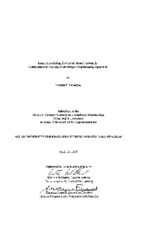| dc.description.abstract | Circuit boards are integral parts of almost all electronic products, which are widespread in today's society. Companies utilizing circuit board assembly processes must remain competitive by using new technologies, shortening assembly cycle times, and decreasing costs. Optimization techniques involve process planning and lead to shortened cycle times and reduced costs. No generic workload-balancing tool is available to optimize the assembly process. This study is part of a larger, ATP-sponsored project that will create a tool of this sort by choosing and configuring the placement machines, allocating parts to appropriate machines, assigning parts to machine feeders, arranging part placement in sequential order, and sequentially scheduling boards on particular lines. My part of the project is to assign circuit boards to assembly lines and to sequence the boards on those lines. The project required that the following factors be considered: the different machine types, the number of machines on each line, the number of different circuit board types, the number of circuit boards of each type to be produced, the number of different component types, and the number of each component type on each circuit board type. Incorporating these considerations, the mathematical model assigns and schedules boards on assembly lines. AMPL, Advanced Mathematical Programming Language, uses script and data files to run with the model. Testing the model and analyzing the results proved that the model is a heuristic that is capable of scheduling printed circuit boards to assembly lines. The ATP-sponsored research project will result in a generic decision support tool for circuit board assembly optimization. | en |


